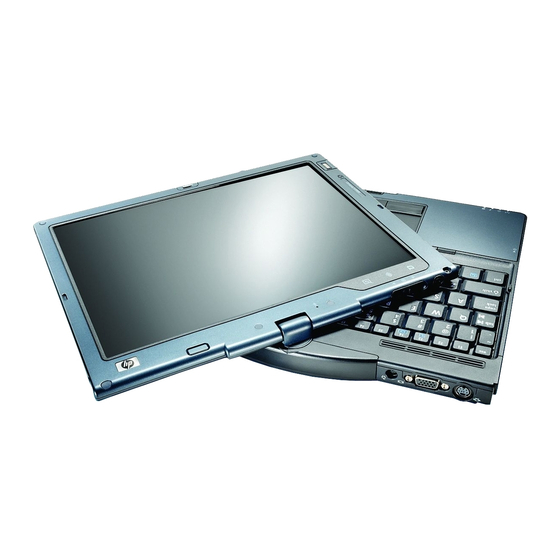
HP Compaq NC4400 User Manual
External devices
Hide thumbs
Also See for Compaq NC4400:
- Maintenance and service manual (228 pages) ,
- Getting started manual (67 pages) ,
- Quickspecs (35 pages)
Summary of Contents for HP Compaq NC4400
-
Page 1: External Devices
External Devices Document Part Number: 405762-001 May 2006 This guide explains how to use optional external devices. -
Page 2: Table Of Contents
1 Using a USB device Connecting a USB device ......1–2 Stopping a USB device ......1–3 Required USB software . -
Page 3: Using A Usb Device
Universal Serial Bus (USB) is a hardware interface that can be used to connect an optional external device, such as a USB keyboard, mouse, drive, printer, scanner, or hub, to the computer or to an optional docking device. A hub provides additional USB ports for the system and can be connected to the computer or to another hub. -
Page 4: Connecting A Usb Device
Using a USB device ✎ Your computer may look slightly different from the illustration in this chapter. Connecting a USB device Ä CAUTION: To prevent damage to the USB connectors, use minimal force to insert a USB device. To connect a USB device to the computer, connect the USB cable for the device to the USB port. -
Page 5: Stopping A Usb Device
Stopping a USB device Ä CAUTION: To prevent loss of information or an unresponsive system, stop the USB device before removing it. To stop a USB device: 1. Double-click the Safely Remove Hardware icon in the notification area at the far right of the taskbar. ✎... -
Page 6: Usb Legacy Support
Using a USB device USB legacy support USB legacy support (enabled by default) allows you to ■ Use a USB keyboard, mouse, or hub connected to a USB port on the computer during startup or in a non-Microsoft® Windows® application or utility. ■... -
Page 7: Using The Docking Connector
Using the docking connector The docking connector on the bottom of the computer allows you to connect the computer to an optional docking device. An optional docking device provides additional ports and connectors that can be used with the computer. ✎... - Page 8 Corporation. The information contained herein is subject to change without notice. The only warranties for HP products and services are set forth in the express warranty statements accompanying such products and services. Nothing herein should be construed as constituting an additional warranty. HP shall not be liable for technical or editorial errors or omissions contained herein.



